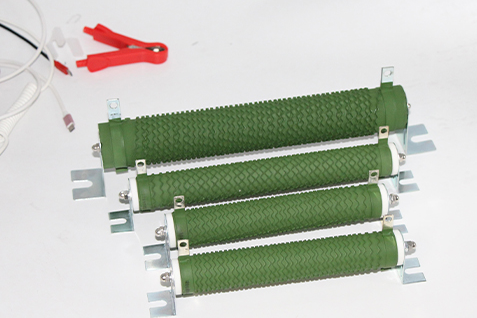A resistor is a common electronic component that creates resistance to electrical current, thereby changing the voltage and current in a circuit. There are many types of resistors, but the most common ones are fixed resistors and variable resistors. This article will describe the characteristics and applications of both resistors to help you choose the one that best suits your needs.
fixed resistor
A fixed resistor is a resistor with a fixed resistance value that cannot be adjusted or changed. The resistance value of a fixed resistor is usually identified by a color bar code or number, and the unit is ohms (Ω). The resistance value of a fixed resistor is determined by factors such as its material, length, cross-sectional area and temperature. The resistance value of fixed resistors generally ranges from a few ohms to several megaohms, with an error between 1% and 10%.
The main functions of fixed resistors are current limiting, voltage dividing and load matching. Limiting current refers to making the current reach a certain size through a resistor to protect other components in the circuit, such as light-emitting diodes (LEDs). Voltage division refers to dividing the power supply voltage into two parts through a resistor to provide it to other components in the circuit, such as operational amplifiers (OP-AMP), etc. Load matching refers to making the impedances of two parts of the circuit equal through resistors to improve signal transmission efficiency, such as antennas.
Common types of fixed resistors are:
Carbon Film Resistor: This is the most commonly used fixed resistor, which is made by covering an insulating core with a layer of carbon film. The resistance value of carbon film resistors is generally between a few ohms and several megaohms, with an error between 5% and 10%. The advantages of carbon film resistors are that they are cheap, easy to manufacture, small, and durable. The disadvantages are high temperature coefficient, high noise, low accuracy and low power.
Metal Film Resistor: This is a more accurate fixed resistor than a carbon film resistor and is made by covering an insulating core with a metal film. The resistance value of metal film resistors generally ranges from a few ohms to several megaohms, with an error between 1% and 5%. The advantages of metal film resistors are low temperature coefficient, low noise, high precision and high power. The disadvantages are that they are expensive, easily affected by humidity, and large in size.
variable resistor
A variable resistor is a resistor whose resistance value can be changed. It can be adjusted manually or automatically. The resistance value of a variable resistor is usually identified by numbers or letters, and the unit is ohms (Ω). The resistance value of a variable resistor is determined by factors such as its structure, material, contact position and temperature. The resistance value of a variable resistor is generally between a few ohms and several megaohms, with an error between 10% and 20%.
The main function of the variable resistor is to adjust the performance of the circuit, such as adjusting volume, brightness, frequency, gain, etc. A variable resistor can change the voltage or current across the resistor according to the needs of the circuit, thereby affecting other components in the circuit, such as speakers, light bulbs, oscillators, amplifiers, etc.
Common types of variable resistors are:
Potentiometer: This is the most commonly used variable resistor. It is a ring made of resistive material with a movable sliding contact piece and two fixed terminals. The resistance value of the potentiometer is determined by the position of the sliding contact piece and can be adjusted by rotating or sliding. The advantages of the potentiometer are simple structure, easy operation, and large adjustable range. The disadvantages are poor durability, poor contact, loud noise, and low accuracy.
Rheostat: This is a variable resistor used for precision adjustment. It consists of a straight line of resistive material with a movable sliding contact piece and two fixed terminals. The resistance value of the varistor is determined by the position of the sliding contact piece and can be adjusted with a knob or screwdriver. The advantages of varistor are high precision, good stability and low noise. The disadvantages are complex structure, inconvenient operation and small adjustable range.
Summarize
Resistors are an important electronic component that come in two main types: fixed resistors and variable resistors. The resistance value of a fixed resistor is fixed and cannot be changed. They are commonly used in applications such as current limiting, voltage dividing, and load matching. The resistance value of a variable resistor can be changed. They are often used to adjust the performance of a circuit, such as adjusting volume or brightness. Understanding the types and characteristics of resistors can help you choose the one that best suits your needs.

 EN
EN
 AR
AR
 BG
BG
 HR
HR
 CS
CS
 DA
DA
 NL
NL
 FI
FI
 FR
FR
 DE
DE
 EL
EL
 IT
IT
 JA
JA
 KO
KO
 NO
NO
 PL
PL
 PT
PT
 RO
RO
 RU
RU
 ES
ES
 SV
SV
 TL
TL
 ID
ID
 LT
LT
 SR
SR
 SK
SK
 UK
UK
 VI
VI
 HU
HU
 TH
TH
 TR
TR
 AF
AF
 MS
MS
 GA
GA
 BN
BN
 LO
LO
 LA
LA
 NE
NE
 MY
MY
 UZ
UZ




